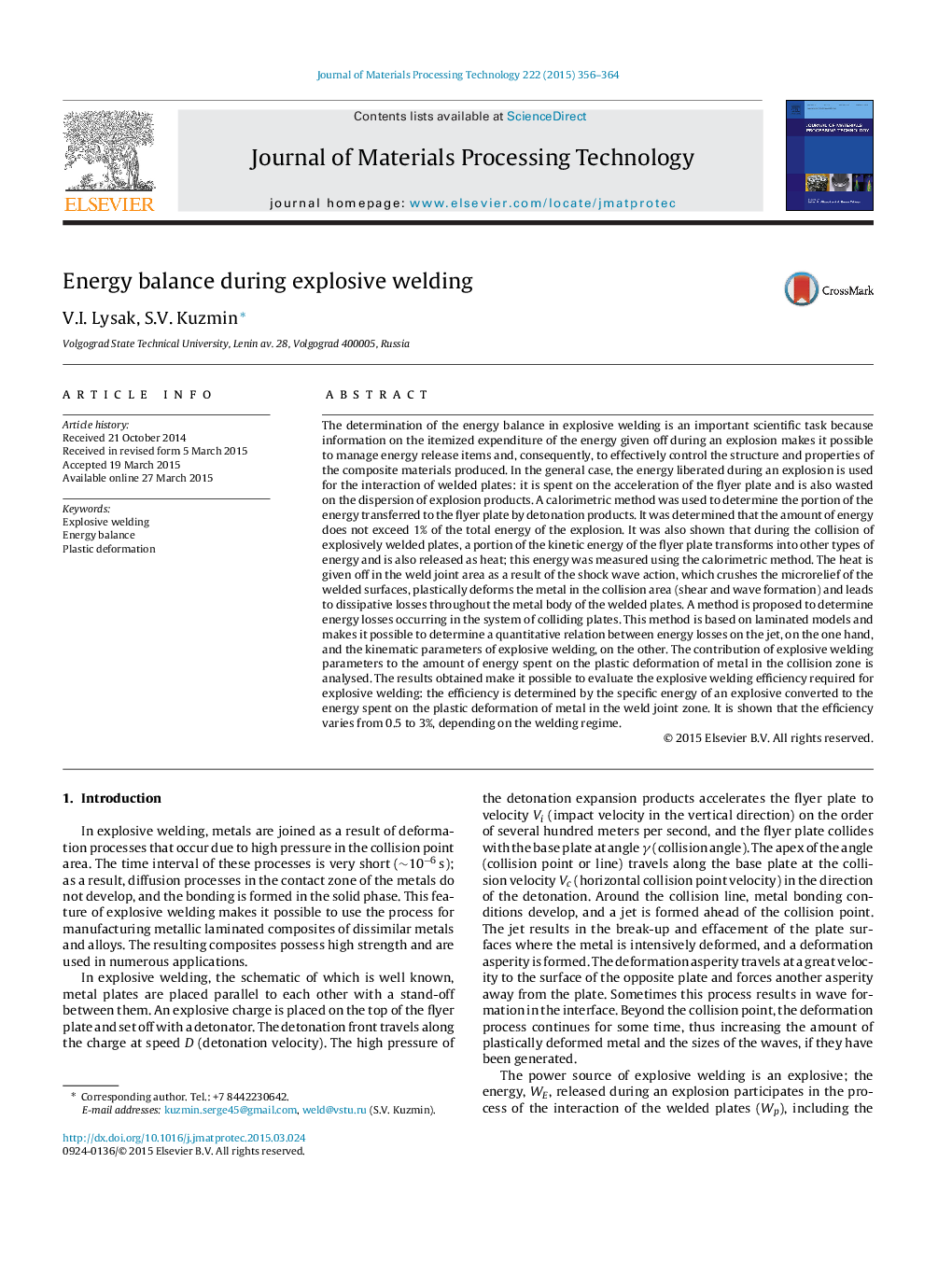| Article ID | Journal | Published Year | Pages | File Type |
|---|---|---|---|---|
| 7177088 | Journal of Materials Processing Technology | 2015 | 9 Pages |
Abstract
The determination of the energy balance in explosive welding is an important scientific task because information on the itemized expenditure of the energy given off during an explosion makes it possible to manage energy release items and, consequently, to effectively control the structure and properties of the composite materials produced. In the general case, the energy liberated during an explosion is used for the interaction of welded plates: it is spent on the acceleration of the flyer plate and is also wasted on the dispersion of explosion products. A calorimetric method was used to determine the portion of the energy transferred to the flyer plate by detonation products. It was determined that the amount of energy does not exceed 1% of the total energy of the explosion. It was also shown that during the collision of explosively welded plates, a portion of the kinetic energy of the flyer plate transforms into other types of energy and is also released as heat; this energy was measured using the calorimetric method. The heat is given off in the weld joint area as a result of the shock wave action, which crushes the microrelief of the welded surfaces, plastically deforms the metal in the collision area (shear and wave formation) and leads to dissipative losses throughout the metal body of the welded plates. A method is proposed to determine energy losses occurring in the system of colliding plates. This method is based on laminated models and makes it possible to determine a quantitative relation between energy losses on the jet, on the one hand, and the kinematic parameters of explosive welding, on the other. The contribution of explosive welding parameters to the amount of energy spent on the plastic deformation of metal in the collision zone is analysed. The results obtained make it possible to evaluate the explosive welding efficiency required for explosive welding: the efficiency is determined by the specific energy of an explosive converted to the energy spent on the plastic deformation of metal in the weld joint zone. It is shown that the efficiency varies from 0.5 to 3%, depending on the welding regime.
Related Topics
Physical Sciences and Engineering
Engineering
Industrial and Manufacturing Engineering
Authors
V.I. Lysak, S.V. Kuzmin,
